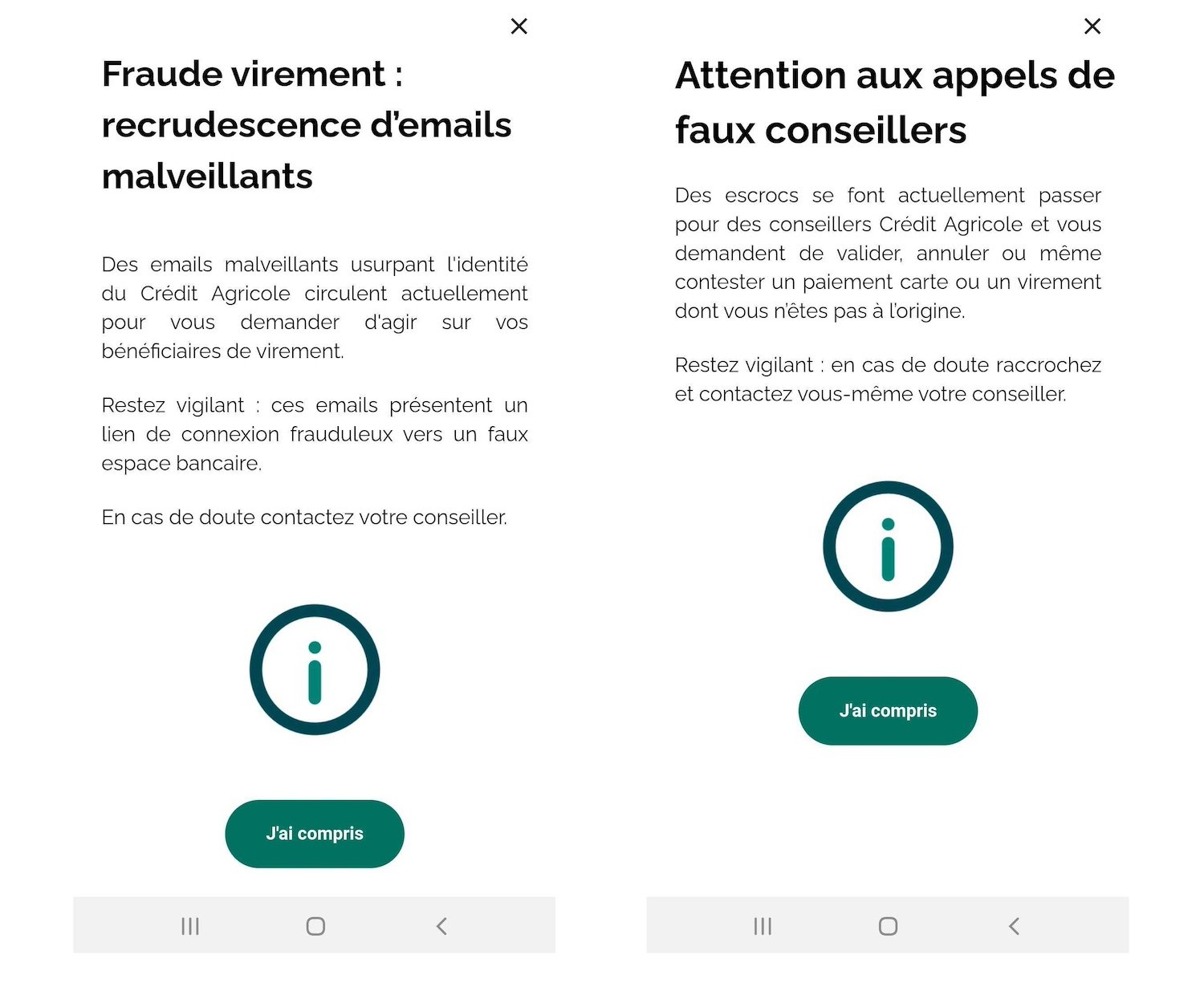The phenomenon is not new, but it is intensifying. Some banks have taken up the subject of increasingly sophisticated fraud targeting their customers. Stop bombarding them with prevention messages, as, for example, Crédit Agricole does.
Capping of amounts, delay when adding a beneficiary, automatic monitoring of suspicious transactions: these are the three classic strategies deployed by banks to counter risks of transfer fraud. Insufficient, however, given the surge in attacks (+64% between 2021 and 2022, pending more recent figures). In this context, some are redoubling their efforts to find solutions. They focus in particular on the preventioneven if it means making the use of their interfaces heavier.
Transfers: is your bank doing enough against fraud?
Fraud has become an expert activity
Crdit Agricole is one of those players who choose torequire their users to actively inform themselves on risks. Recently, the bank has increase the alerts on fake advisor fraud, identity usurping emails or false RIB details.
The prevention component is a fundamental element of the fight against fraud, confirms MoneyVox in the communication from Crdit Agricole Payment Services. It is important that customers are aware of the new schemes developed by fraudsters. In these cases, very often, the customer is deceived by a person pretending to be his bank.
A response commensurate with the threat, which continues to grow: Like all banks, we are seeing both an increase in fraud attempts and a diversification and sophistication of methods: fraud has become an expert activity.
CPF scam, fake jackpots, internet payments… Here’s how to avoid 7 common scams
More intrusive campaigns…and more effective
Bank prevention campaigns have also changed in nature. For a long time, establishments were content to display banners, more or less discreet, on their website, or to send emails. The latter, however, can generate doubt among the user, encouraging them to be wary: is it a legitimate message or spam?
For great ills there are great remedies: at Crdit Agricole, but also at BoursoBank and others, the prevention has gone to the next level. Messages are now displayed when connecting to the mobile application or when performing a sensitive operation. Better, these messages constrain the user be active: they remain displayed until he clicks on a button to indicate that he has read them. Intrusive, but effective, the image of certain so-called interstitial advertisements displayed on websites.

No click tracking at Crdit Agricole
One question remains: can these clicks turn against the user if they are the victim of fraud? Will banks exploit them to justify their refusal to reimburse damage suffered? In fact, in this case, they often invoke the customer negligence, fallen into the trap through imprudence, but generally struggle to provide proof. Can this click constitute this evidence? Asked about the question, Crdit Agricole reassures: These messages are prevention messages for information purposes, there is no tracking, therefore no follow-up possible.
Bank account scam: can your bank refuse to reimburse you?
